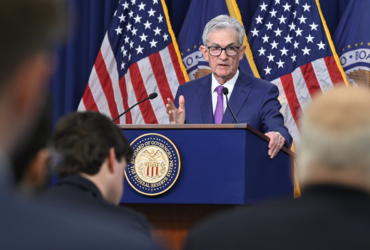The Personal Consumption Expenditures (PCE) price index for February showed a nuanced picture of the current economic environment, presenting a mixed bag of slightly better-than-expected price growth amidst continuing concerns over inflation. The index, a key indicator of inflation closely watched by the Federal Reserve, increased by 0.3% in February, a deceleration from the 0.4% rise observed in January and slightly below the 0.4% increase economists had anticipated.
Despite the marginally better monthly rise, the annual PCE index climbed to 2.5%, aligning with expectations. The primary driver behind the topline number was a significant uptick in energy costs, which surged 2.3%, contrasting sharply with the modest 0.1% increase in food prices. This divergence underscores the volatile nature of commodity prices and their immediate impact on overall inflation metrics.
Examining the details, the report revealed that prices for goods rose by 0.5%, while services saw a 0.3% increase in February. A year-over-year analysis provides a more textured view: prices for services inflated by 3.8%, indicating persistent pressure in the sector, whereas prices for goods slightly decreased by 0.2%, suggesting some areas of the economy might be experiencing deflationary pressures.
Core PCE, which excludes the often volatile categories of food and energy to provide a clearer view of underlying inflation trends, showed a 0.3% price growth, down from January’s 0.5% and below the 0.4% projected by economists. Notably, the annual core index moderated to 2.8%, marking the lowest level since March 2021 and providing a glimmer of hope that inflation could be easing, albeit gradually.
However, underlying economic activities, particularly consumer spending, indicate that inflation remains a complex challenge. Personal spending surged 0.8% in February, a significant leap from the 0.2% increase in January and the largest since January 2023, surpassing economists’ expectations of a 0.5% rise. This robust spending, driven in part by higher prices, underscores the resilience of consumer demand even as individuals face inflationary pressures.
In contrast, personal income growth decelerated to 0.3% in February from a 1.0% gain in January, falling short of the 0.4% economists had forecasted. This slowdown in income growth, coupled with persistent inflation, has eroded savings, pushing the personal savings rate down to 3.6% in February, the lowest since November 2022.
The February PCE report paints a complex picture of the current inflationary landscape. While the slightly better-than-expected price growth offers some relief, the underlying dynamics, especially the robust consumer spending amidst modest income growth, highlight the ongoing challenges in achieving sustained inflation moderation. The Fed and policymakers will likely continue to scrutinize these trends closely, balancing the need to control inflation with the risks of dampening economic growth.





